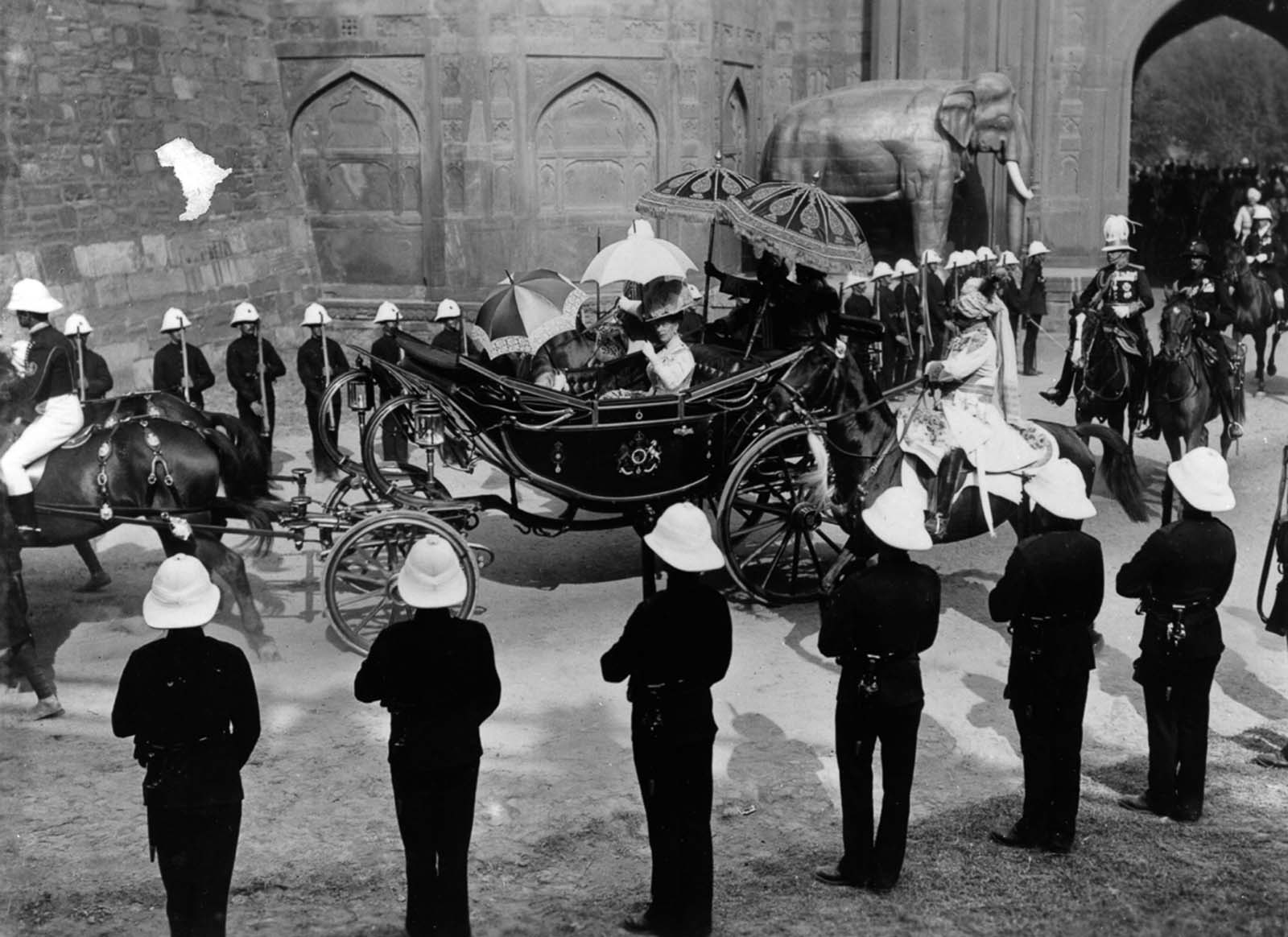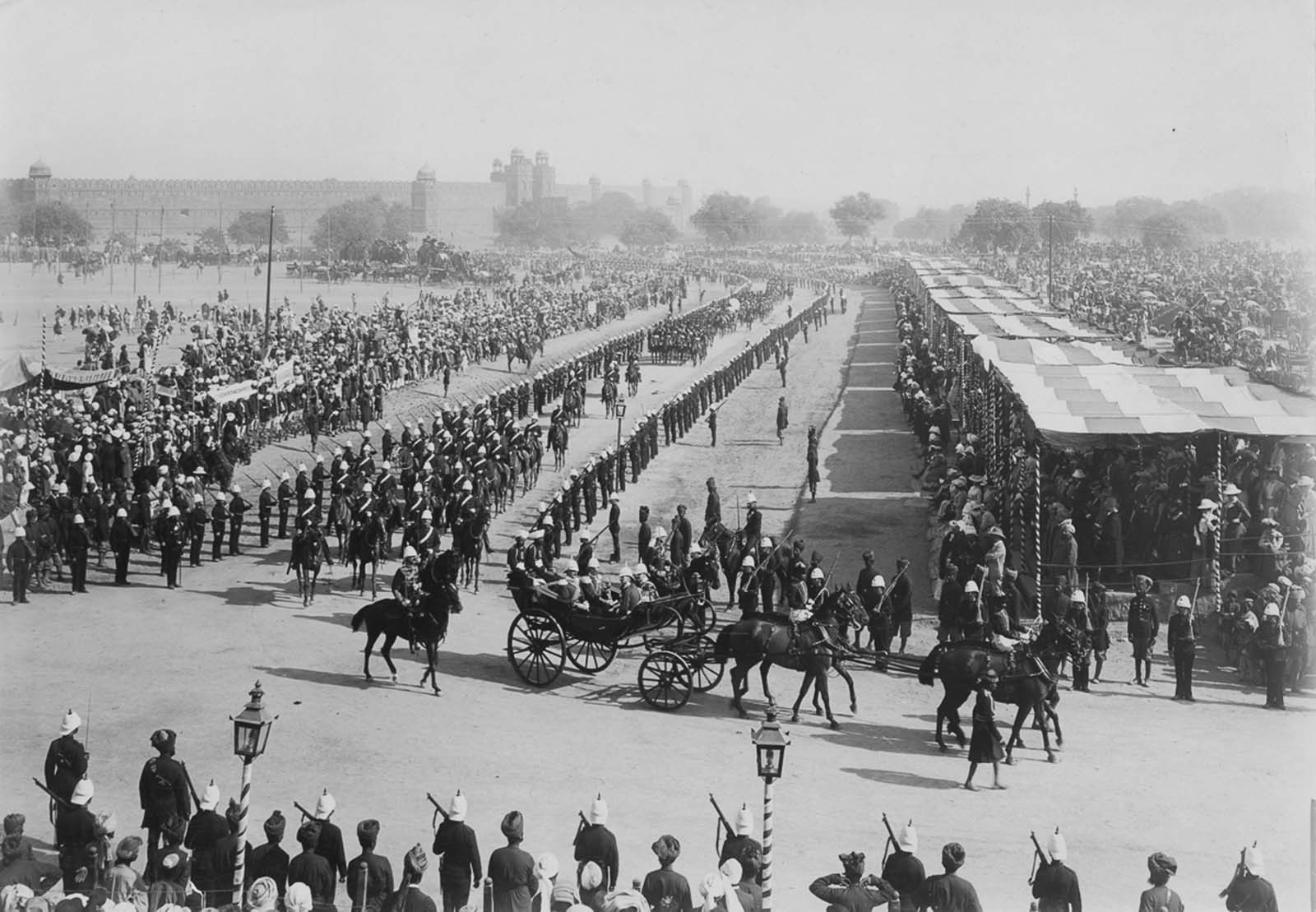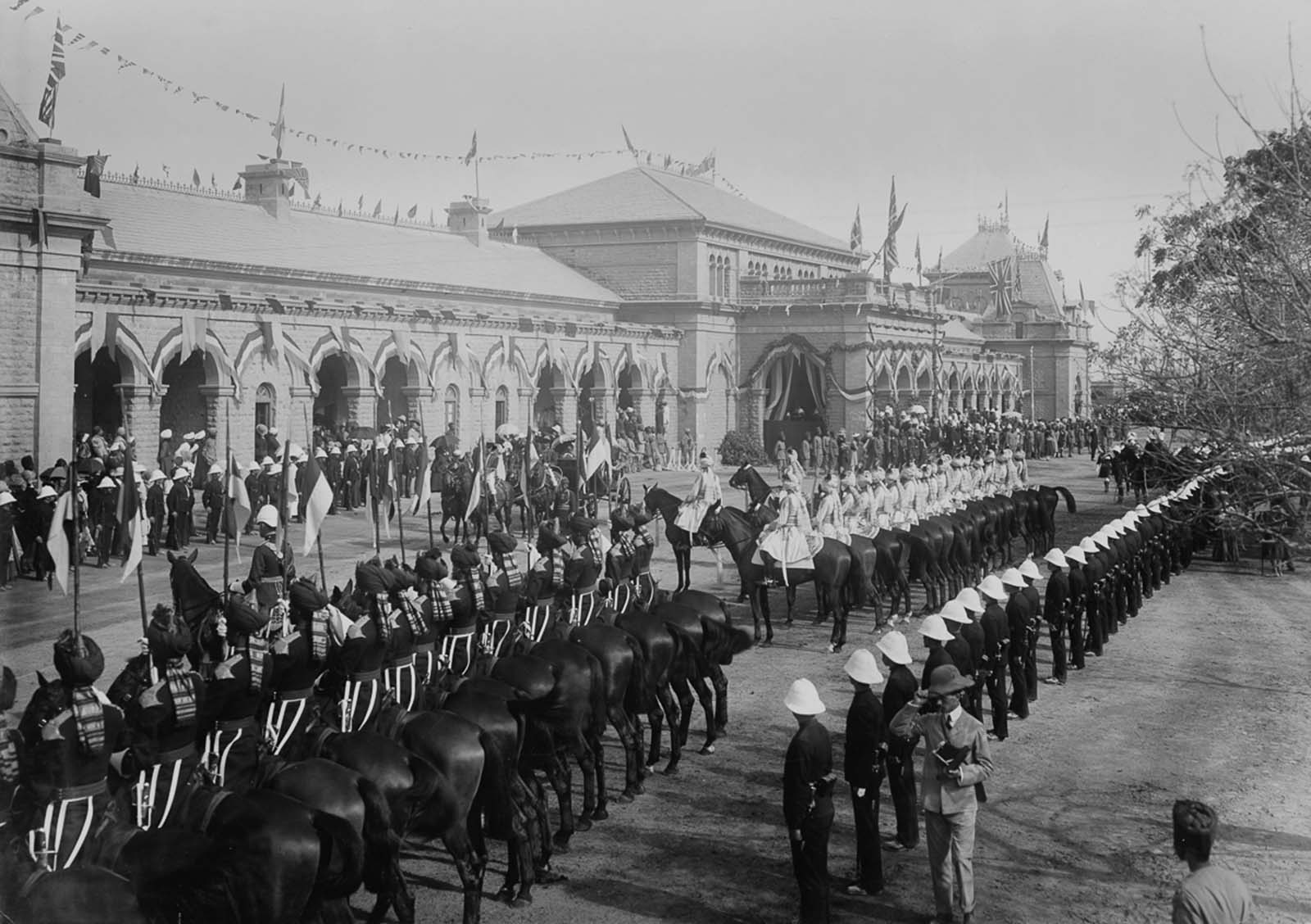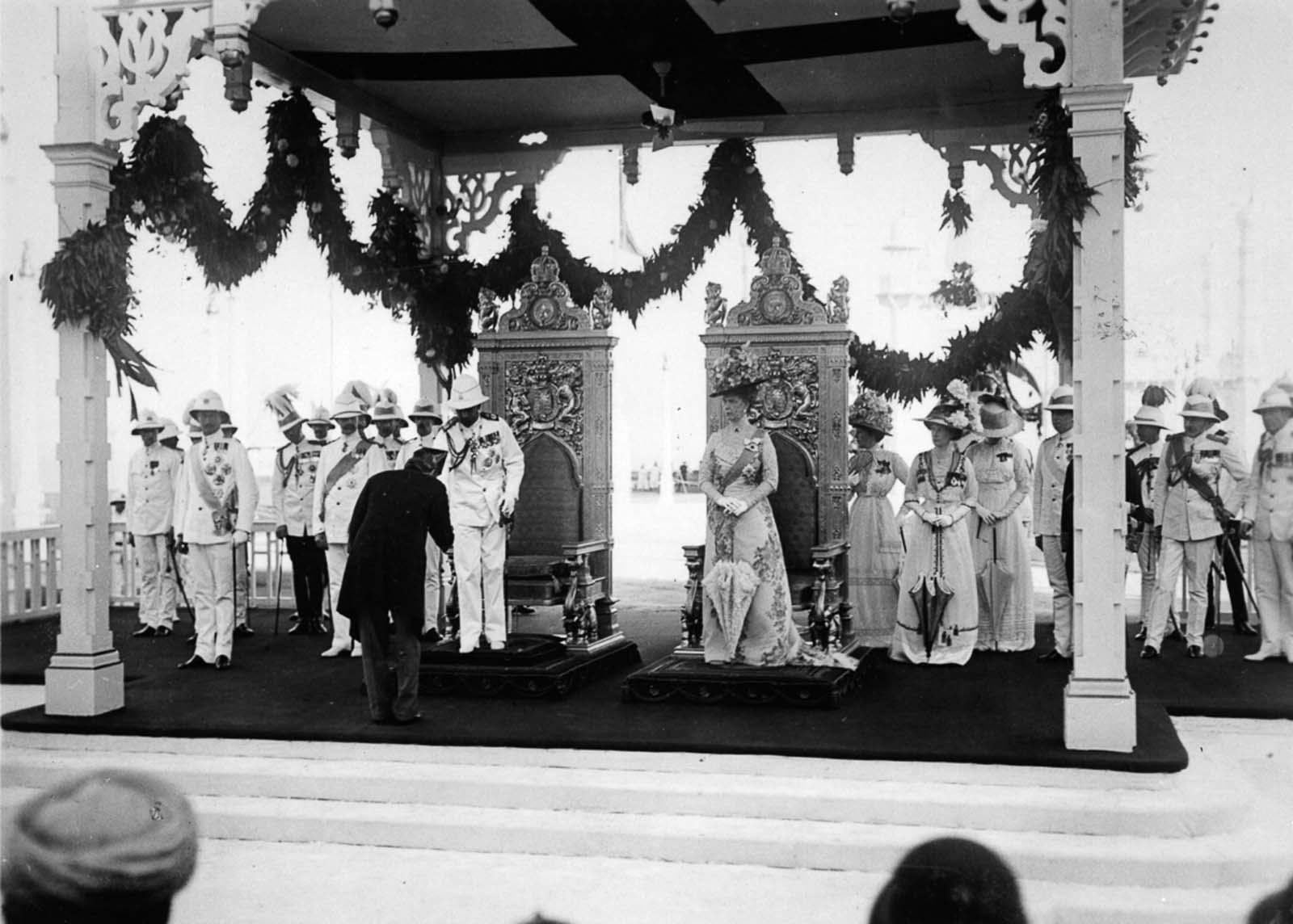
In 1911, the King of Great Britain and Ireland, king George V, journeyed to India to be sworn in as Emperor of India in a great Durbar in Delhi on the 12th of December 1911.
The location for the event was to be in northwest Delhi, where a city made of tents was constructed. It ran through for over 25 square miles. The king’s tent, which measured about 84 acres, was at the centre of the camp. The camps were sectioned, some built for the Indian officials and princes but all In the Chain of Command.
The camp residence had equipped its own railway, which linked it to the amphitheatre where the Durbar was held. New roads measuring about 80 km long water mains were also built.
SEE ALSO: Mugshots Of Child Criminals Of Edwardian Britain, 1900-1910

The Imperial couple arrived at the Coronation camp dressed in their official robes, the King-Emperor put on his majestic crown of India. The corns had eight arches which had 6,170 rare cut diamonds covered with sapphires, emeralds, and rubies, also a velvet fur cap which weighed 34 ounces (965 g).
The occasion was graced by all rulers of princely states, there they also had their military officials awarded for their service to the nation. The British royals were also recognised by the National rulers of India. During this the Gaekwar of Baroda, Maharaja Sayajirao III, made it to the Imperial couple however he did so without his Jewelry on and after a simple bow walked with his back towards the royals.

During the event of the Delhi Durbar, King George V also made known the change of the capital to Delhi, this made way for an enormous building plan; a city was designed and built. The reason for this was the capital was to seem like a remake of the grandeur of the Mughal Empire but this time with a new classical western air. This however didn’t last for long as the British had to move out of India.
As the coronation came to an end, a visit to Nepal was arranged for King George’s happiness. He was to hunt tigers and rhinoceros with King Tribhuvan Bir Bikram Shah who unexpectedly died on 11 December 1911, it however did not hinder the hunting expedition.

During the hunting expedition, which lasted 10 days, King George and his side cleverly brought down 39 tigers, 4 sloth bears, 18 rhinos, an outrageous number of porcupines and leopards as well as other small game by luring them with tied-up cattle.
At the end of the expedition, they were presented with a young live rhino by the Prime minister. The young live rhino was then conveyed to the Zoo in London.
